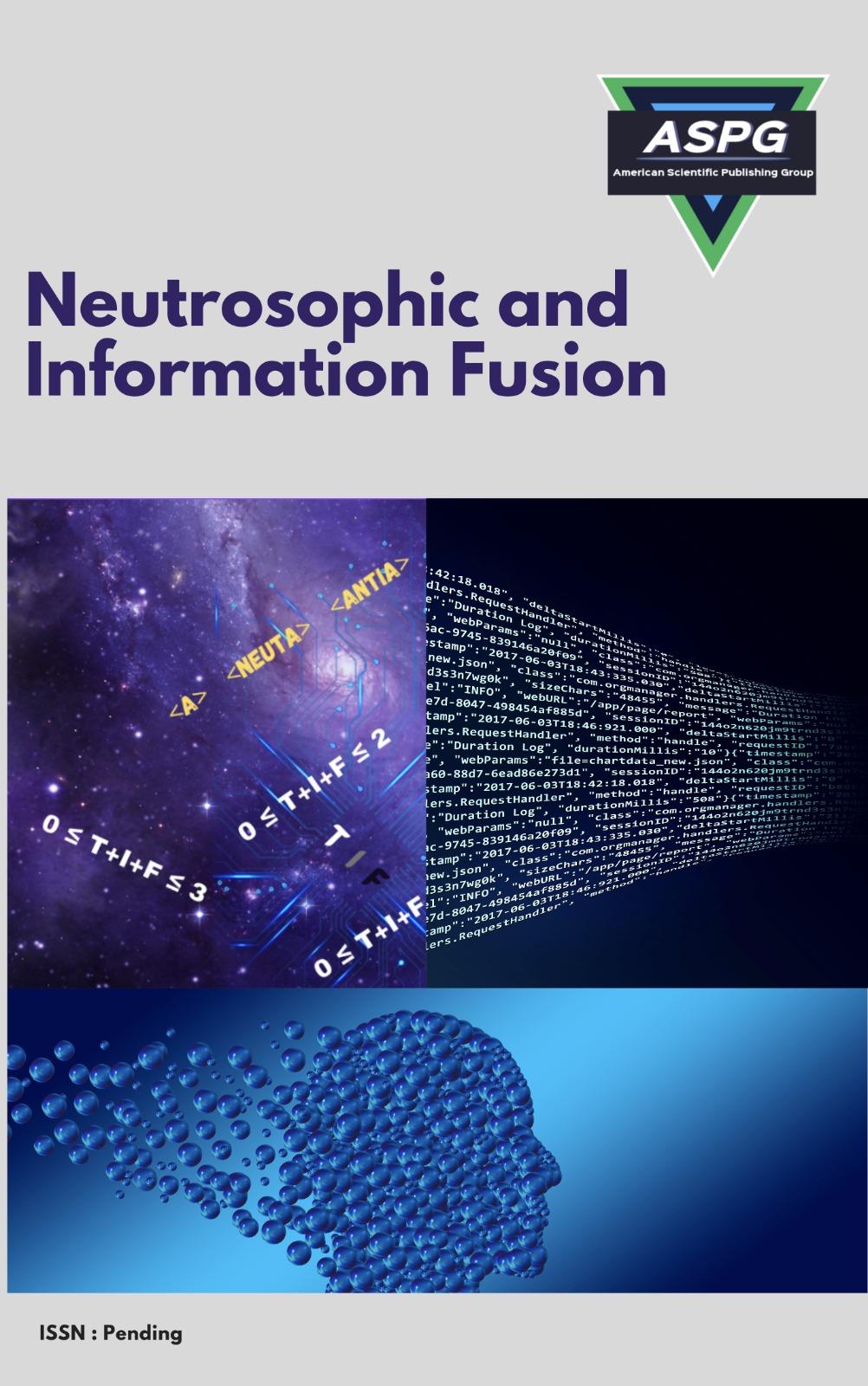

This paper is dedicated to study and to find the symbolic m-plithogenic units in many symbolic plithogenic rings for some special values of m, where we present a full classification of many different symbolic n-plithogenic group of units as direct products of well-known groups by building suitable and well-defined algebraic isomorphisms.
Read MoreDoi: https://doi.org/10.54216/NIF.040103
Vol. 4 Issue. 1 PP. 15-21, (2024)
The basis number b (G) of a graph G is defined to be the smallest positive integer k such that G has a k-fold basis for its cycle space. We try to find an upper bound for b (G_1+G_2+G_3+G_4). We prove that, if G_1,G_2,G_3 and G_4 are connected vertex-disjoint graphs and each has a spanning tree of vertex degree not more than 4, then b(G_1+G_2+G_3+G_4)≤max{4,b(G_1)+1,b(G_2)+2,b(G_3) +2,b (G_4)+1}. The basis number of quadruple join of paths will be studied, where we prove that b p_m+ p_n+p_p+p_t) =4, ∀m,t≥5 and n,p≥6.
Read MoreDoi: https://doi.org/10.54216/NIF.040101
Vol. 4 Issue. 1 PP. 01-05, (2024)
In this paper, we study the invertible elements (units) in the symbolic 4-plithogenic ring of integers, where we use a computational algorithm to find all units in the mentioned ring. The all-elements group of 32 symbolic 4-plithogenic ring of integers has been found and listed.
Read MoreDoi: https://doi.org/10.54216/NIF.040102
Vol. 4 Issue. 1 PP. 06-14, (2024)
Images may be protected from hackers and attackers with the use of steganography. The rapid expansion of the internet has led to the widespread distribution of vast quantities of multimedia content, including photos, movies, and audio files, via various online platforms. To ensure the safety of sensitive information while it is in transit and upon receipt, a high degree of security is required. During the patient scanning procedure, hospitals and scan centers save many pictures of patients on personal computers. Protection from strangers who may see the patients' scanned photos would be necessary for this. Therefore, scan centers and hospitals all over the globe rely heavily on medical image security. The proposed technique includes Fuzzy Logic-Based Key Exchange Protocol in Medical Image Cryptographic Protection Scheme. To provide the utmost protection for the medical pictures, the cover image incorporates the secret image. At the outset, we standardize the cover and hidden photos. The cover image for this thesis might be a picture of nature or a benchmark; the hidden image, on the other hand, is a medical image in grayscale or binary format. After that, the normalized picture is processed using DWT. The hidden picture is embedded into the cover image using a fuzzy-based edge-related steganography approach, which uses these altered coefficients. To get the stego image, the embedded picture is normalized in the reverse direction. Additionally, this study suggests DT-CWT transform based picture security. Part one of the suggested approach to picture security is image steganography, and part two is picture cryptography. Module 1 uses the DT-CWT transform to fuse the coefficients of the cover picture with the hidden image. After that, the steganography picture is subjected to module 2, which is based on the IE calculation. Analysis of experimental data for the suggested picture security approach revealed improved outcomes for encrypted communication.
Read MoreDoi: https://doi.org/10.54216/NIF.040104
Vol. 4 Issue. 1 PP. 22-31, (2024)
Other few challenges faced during privacy preservation by anonymity e.g. difficulty in identifying the The main challenges in preserving anonymity for privacy are determining which attributes could undermine privacy and extracting useful information from massive databases without disclosing sensitive details. We developed a Novel Framework for Differentially Private Clustering with Dynamic Noise Adjustment (DPC-DNA) that addresses these issues. This novel approach can recognize sensitive and non-sensitive data aspects using Differentially Private Clustering with Dynamic Noise Adjustment (DPC-DNA). The accuracy of clusters formed by DPC-DNA was assessed using the silhouette score, which gauges how similar each item is to its own group versus others. DPC-DNA achieved a silhouette score of 0.62, signalling strong internal cluster composition. In contrast, traditional k-anonymity clustering yielded a lower score of 0.45, confirming that DPC-DNA significantly boosts accuracy. Our Novel Framework for Differentially Private Clustering with Dynamic Noise Adjustment (DPC-DNA) provides a robust solution for privacy-preserving data mining. By combining differential privacy with adaptive noise management, it safeguards sensitive material while sustaining high precision, integrity and usefulness of results.
Read MoreDoi: https://doi.org/10.54216/NIF.040105
Vol. 4 Issue. 1 PP. 32-45, (2024)